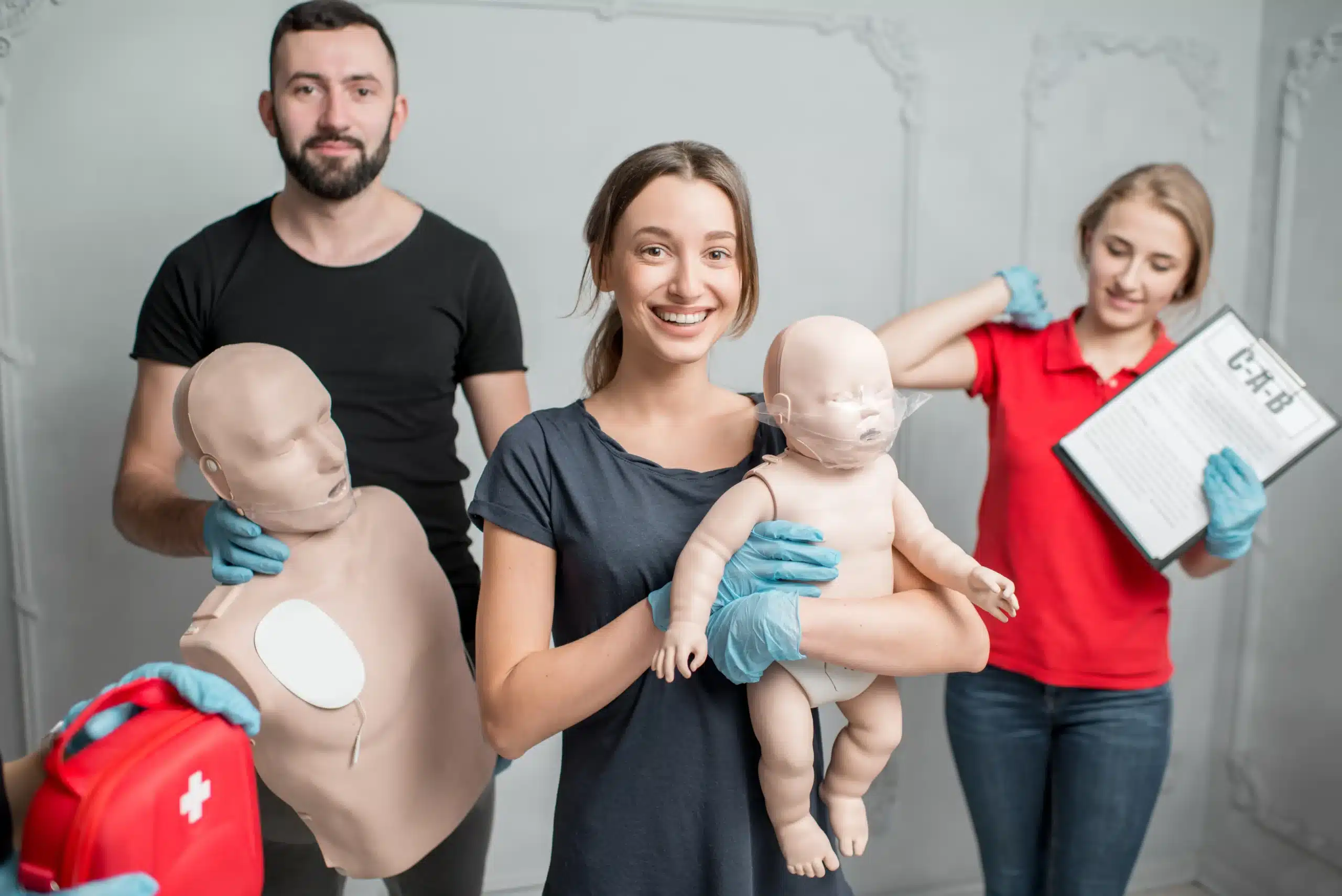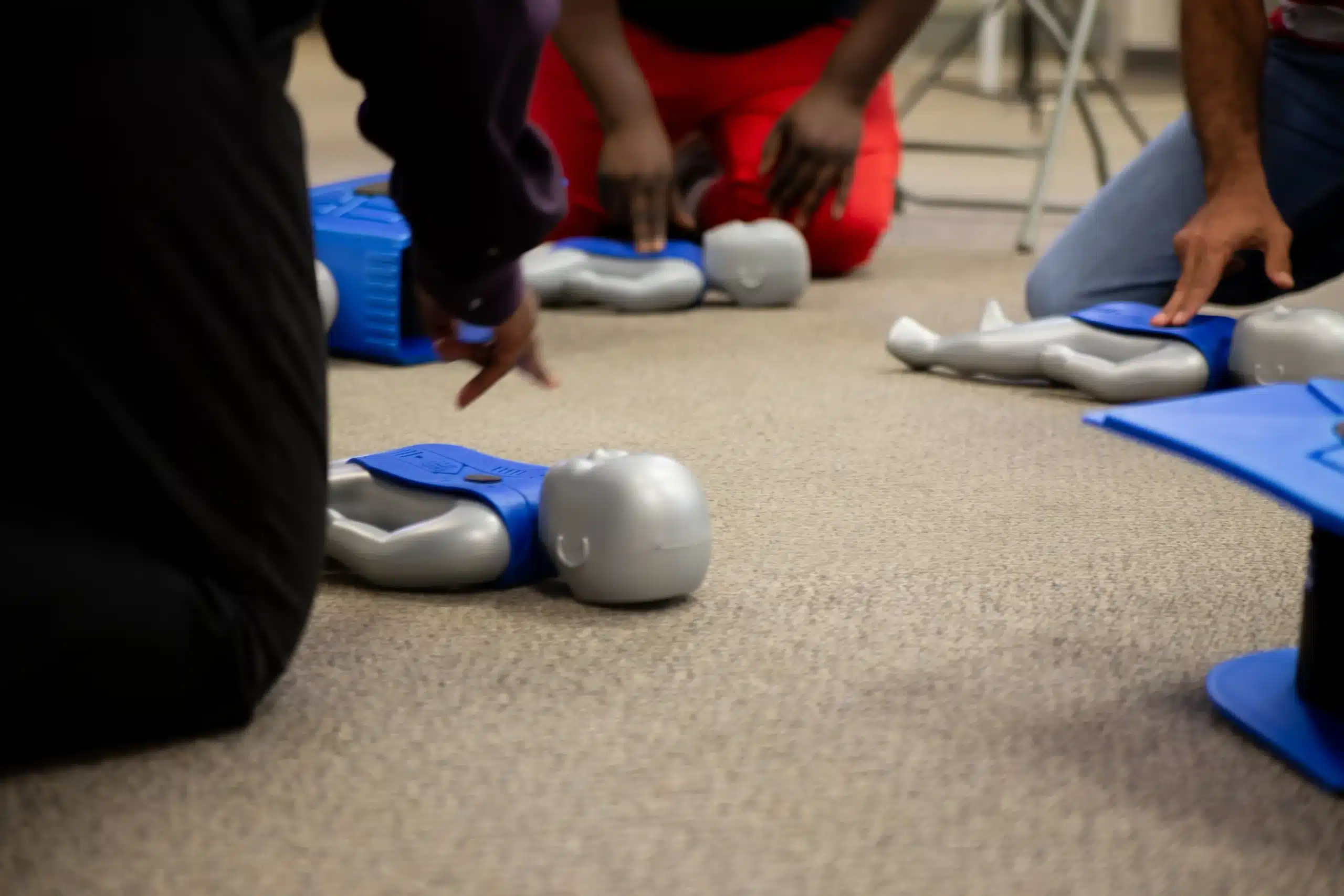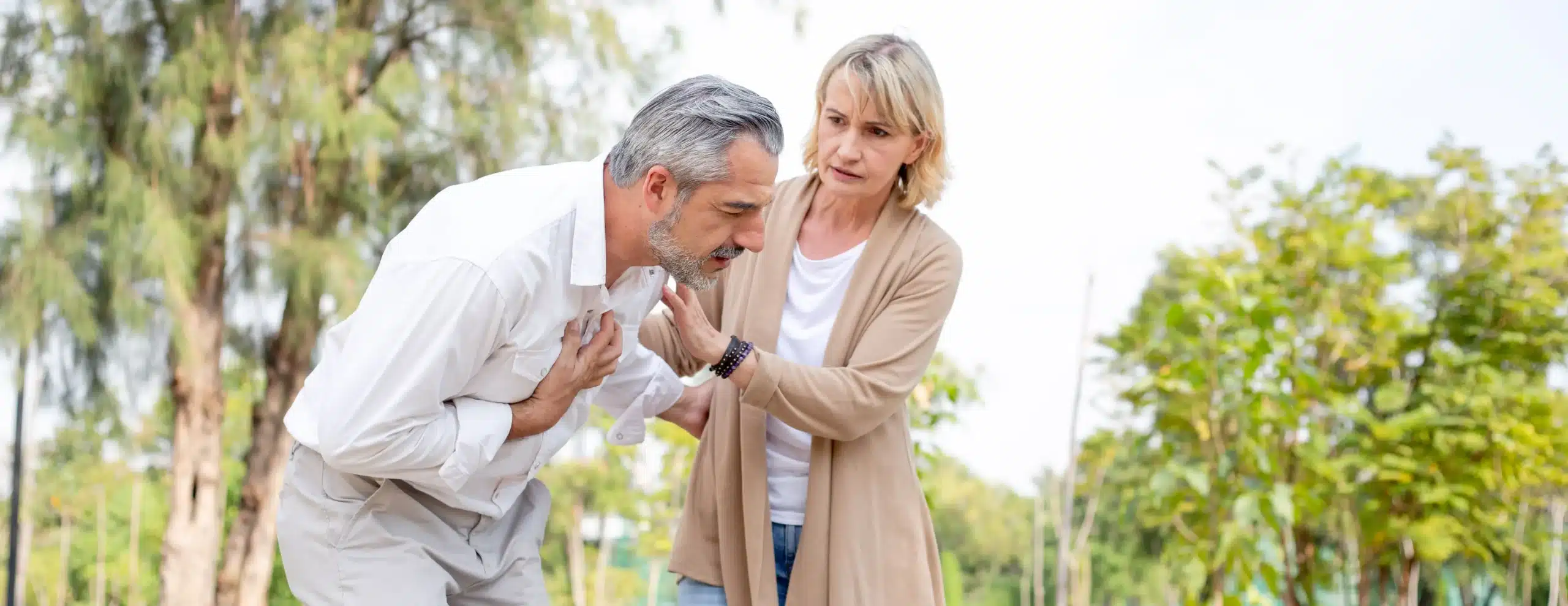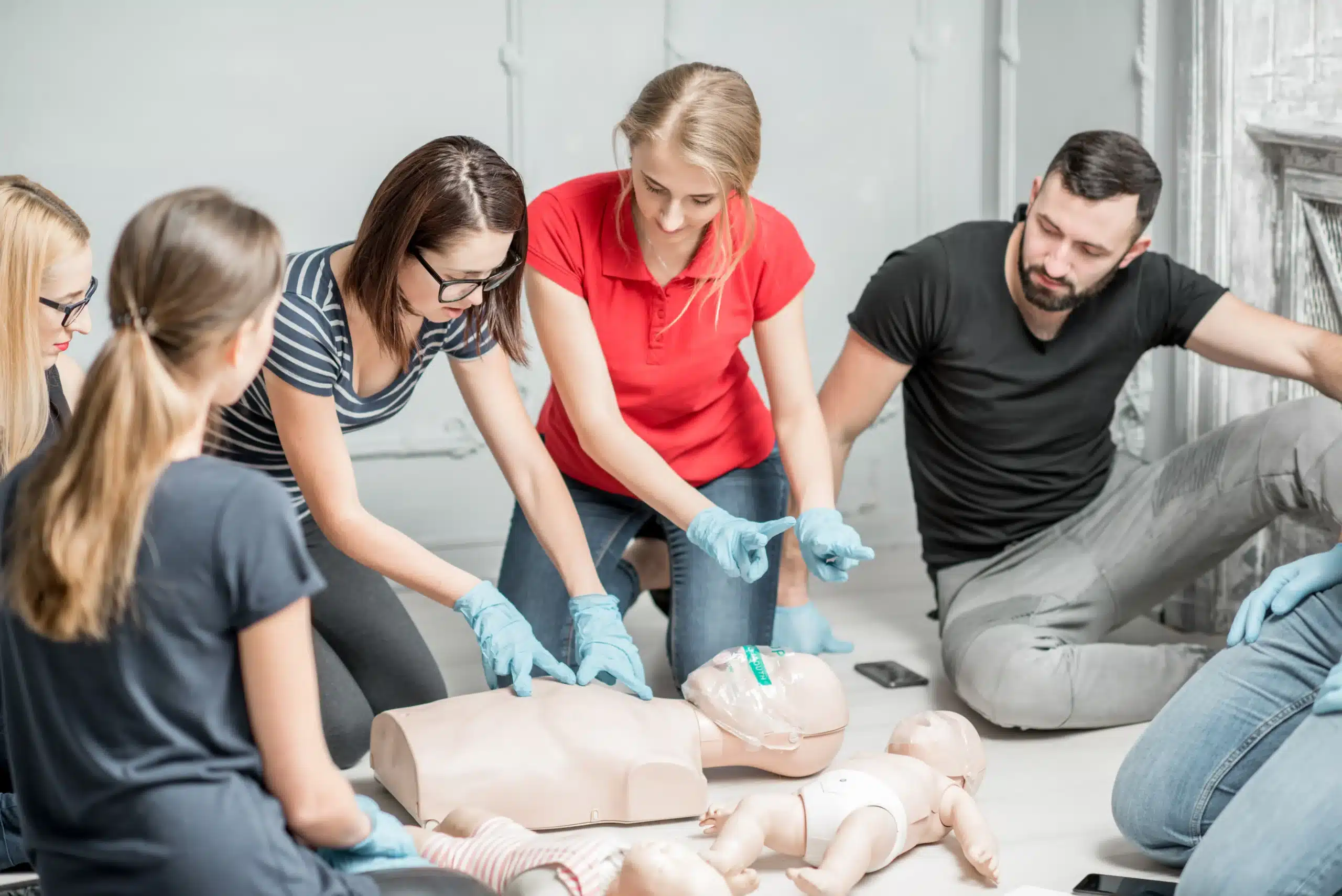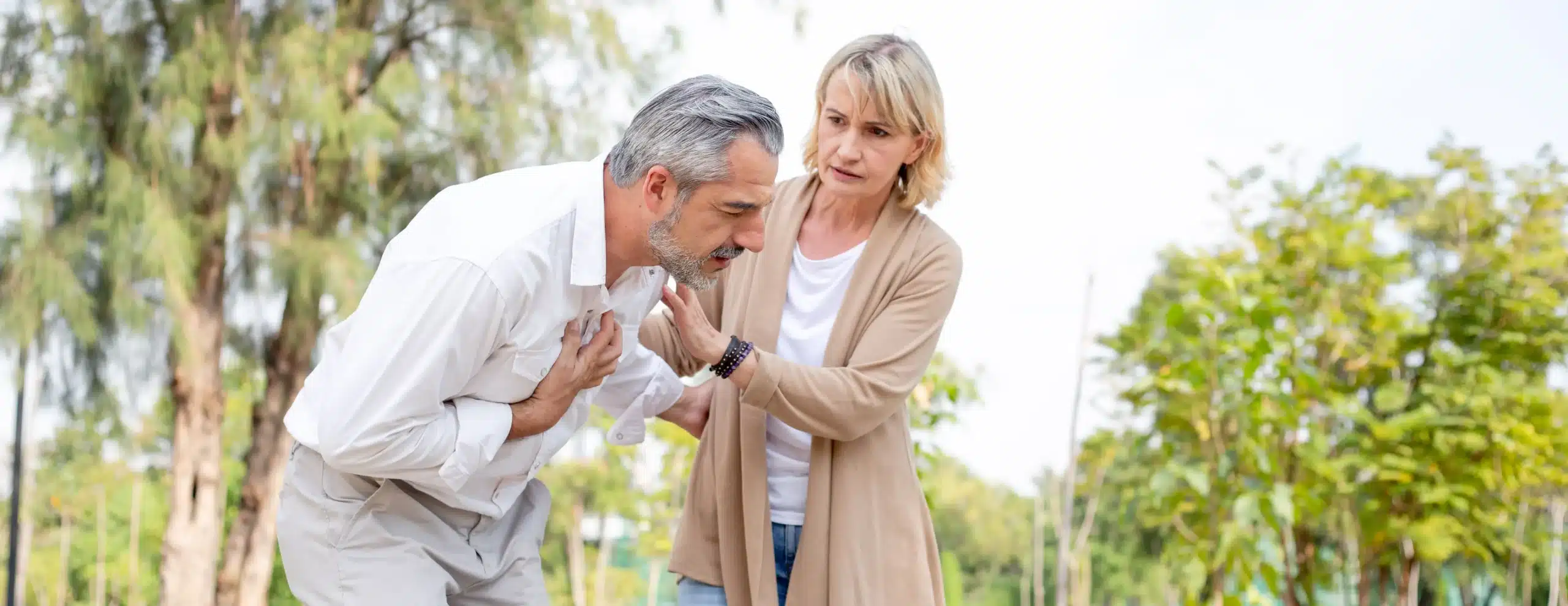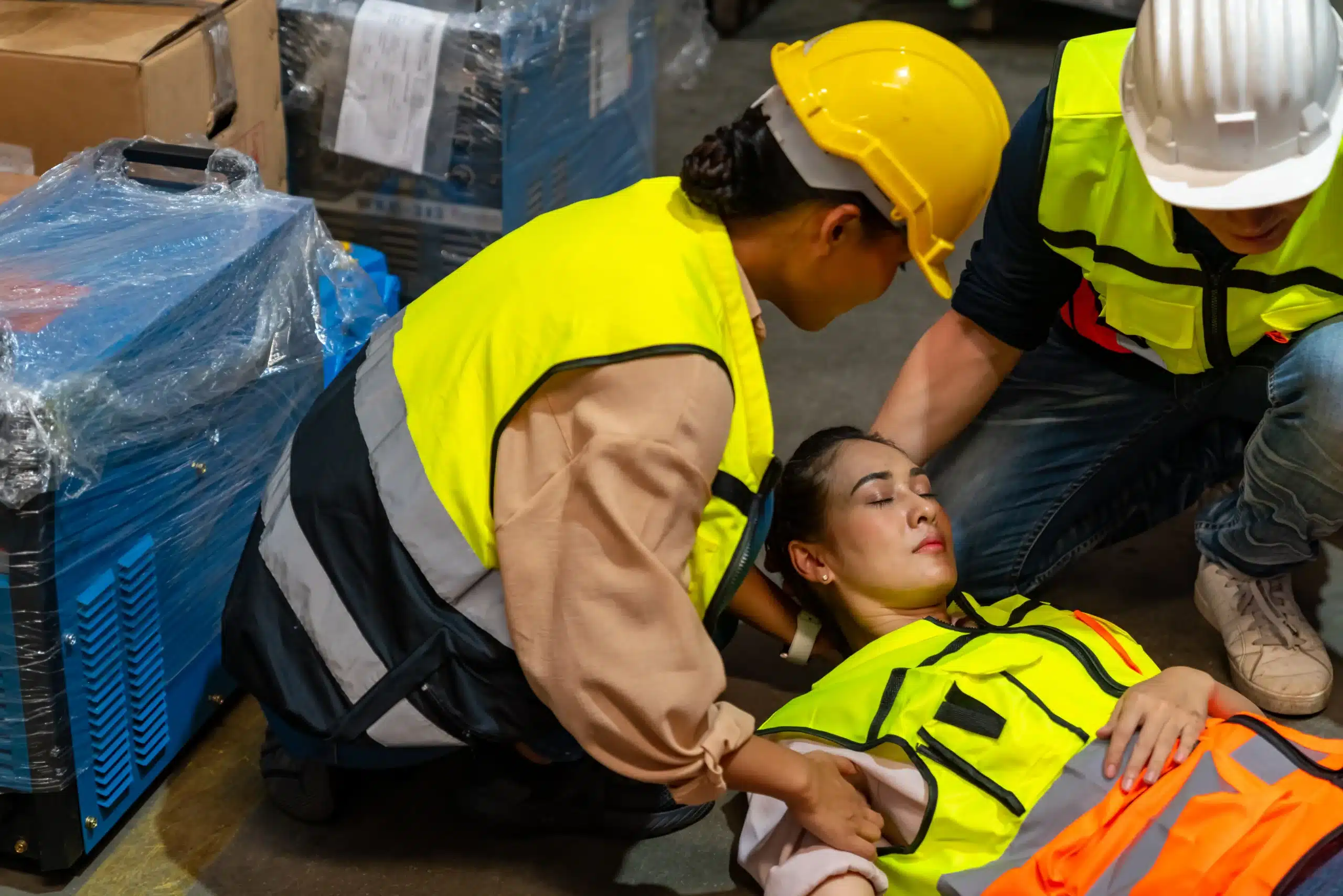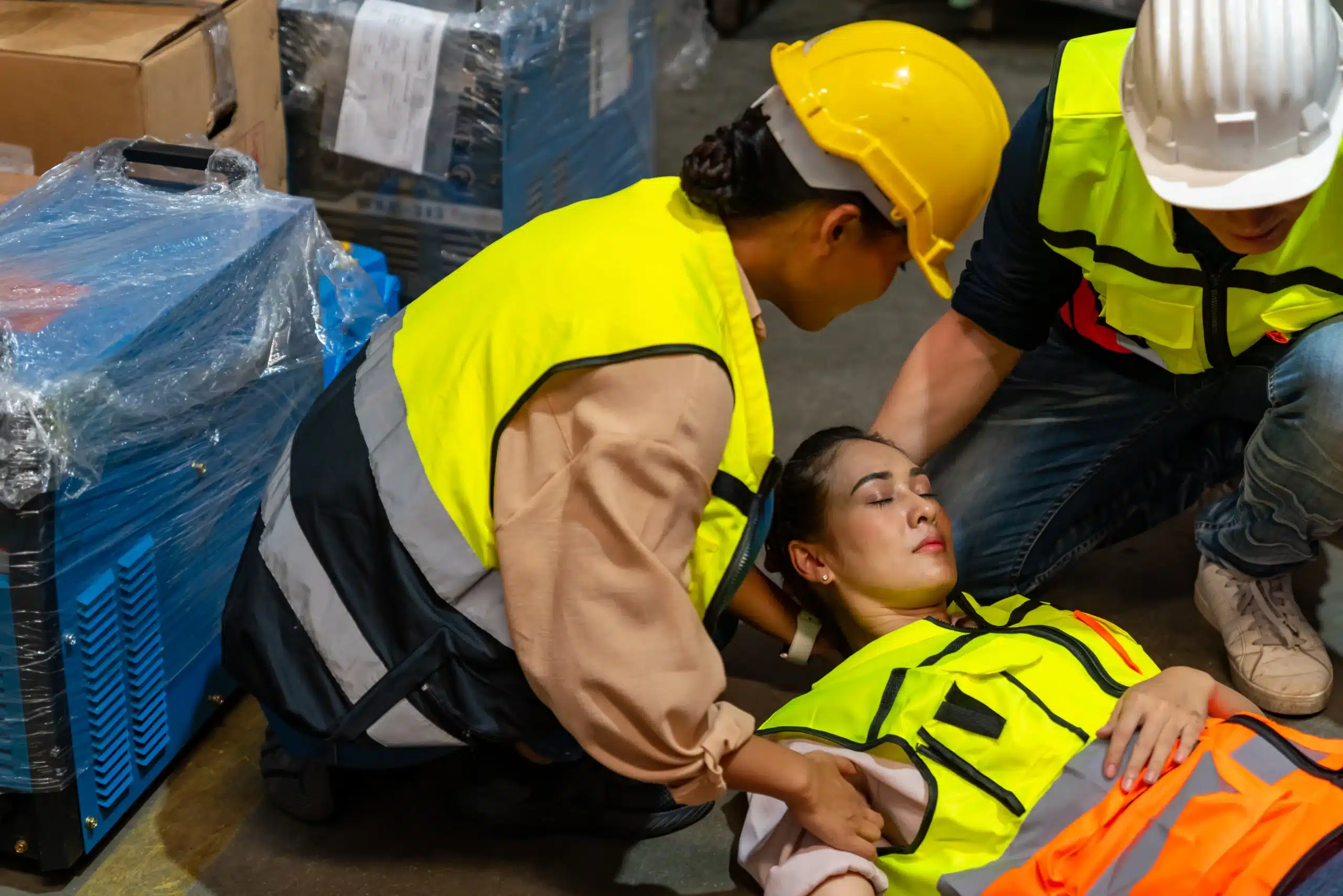In a medical emergency, seconds can matter. Basic Life Support (BLS) training empowers you to respond effectively during those critical first few minutes. From performing CPR and using an AED to relieving choking, BLS skills can stabilize a person until professional help arrives. This article is your comprehensive guide to BLS training, whether you’re a healthcare provider seeking certification or an individual wanting to learn lifesaving skills. We’ll cover what BLS training involves, why it’s so important, and how to find “bls training near me.” We’ll also discuss the various training formats available, the associated costs, and tips for choosing an accredited provider. Get ready to gain the knowledge and confidence to make a real difference in an emergency.
Key Takeaways
- BLS training provides essential lifesaving skills. Learn CPR, AED use, and airway management to confidently respond to medical emergencies. Choose a course format (in-person, online, or blended) that suits your needs.
- BLS certification benefits everyone. Whether you’re a healthcare professional, parent, teacher, or caregiver, BLS skills empower you to make a difference in a crisis. Explore various providers and training options.
- Investing in BLS is an investment in yourself and your community. Find an accredited provider like Berkeley CPR Classes for high-quality training. Explore group discounts and check with your employer about reimbursement. Practice regularly to maintain your skills.
What is BLS Training & Why Does it Matter?
Knowing what to do in a medical emergency can make all the difference. Basic Life Support (BLS) training equips you with the skills to respond effectively and potentially save a life. Let’s break down what BLS training involves and why it’s so important.
What is Basic Life Support (BLS)?
BLS certification teaches the critical skills needed in those first few minutes of a medical crisis. It covers core techniques like CPR, using an Automated External Defibrillator (AED), and relieving airway obstructions. These skills are the foundation of emergency care and can stabilize a person until professional medical help arrives. BLS certification programs, often provided by organizations like the American Heart Association, ensure you learn these skills correctly and confidently. For those in the Berkeley area, you can find more information about our BLS Certification course on our website.
Why are BLS Skills Important in Emergencies?
In emergencies, seconds count. BLS skills bridge the gap between the onset of a crisis and the arrival of paramedics. High-quality BLS can significantly improve a person’s chances of survival. Effective CPR, prompt AED use, and proper airway management can maintain vital functions and prevent irreversible damage. These actions are crucial links in what’s known as the “chain of survival,” increasing the likelihood of a positive outcome. The American Heart Association offers detailed guidance on BLS for healthcare providers, highlighting its importance in the medical field.
Who Needs BLS Training?
While often associated with healthcare professionals, BLS training is valuable for anyone. Medical personnel, of course, benefit immensely from BLS certification, ensuring they can provide immediate and effective care in any setting. Articles like this one discussing common misconceptions about BLS highlight the importance of proper understanding for healthcare workers. But the value extends far beyond hospitals and clinics. Parents, teachers, coaches, childcare providers—anyone who interacts with others can benefit from these lifesaving skills. Knowing BLS empowers you to respond confidently in emergencies, potentially saving a life at home, in public, or at work. Consider BLS training an investment in yourself, your loved ones, and your community. This article on common misconceptions about BLS underscores the importance of BLS training for everyone.
Find BLS Training Near You
Finding the right BLS training program is easier than you think. Several organizations and platforms offer courses, so you can choose the best fit for your schedule and learning style. Here’s a breakdown of where to look:
Local Training Centers & Organizations
Community colleges, hospitals, and recreation centers often host BLS certification courses. Check with organizations like your local Red Cross chapter or community health organizations for upcoming classes. For example, Montgomery College offers various CPR and First Aid training for both healthcare professionals and the general public. These local options are great for people who prefer in-person instruction.
Online BLS Course Platforms
Online platforms offer a convenient way to learn BLS at your own pace. Providers like ACLS Medical Training offer online BLS certification covering essential life-saving techniques for adults, children, and infants. This format is ideal for busy schedules or those who prefer self-directed learning.
Berkeley CPR Classes: Your Local BLS Provider
Berkeley CPR Classes provides a range of American Heart Association certification courses right here in Berkeley, CA. We offer BLS certification, along with other courses like ACLS and PALS. We’re committed to providing high-quality training at affordable prices, with a low price guarantee. We also offer group discounts, making it a cost-effective option for workplaces or groups of friends. Serving Alameda, Oakland, and Berkeley, we offer classes daily in over 60 cities, so you can find a time and location that works for you. Check out our RQI classes as well.
Other Reputable BLS Training Providers
Several nationally recognized organizations offer BLS training:
American Heart Association
The American Heart Association offers various BLS courses, including instructor-led training, focusing on high-quality CPR and team dynamics. They provide options for both single-rescuer and team BLS skills.
American Red Cross
The Red Cross offers comprehensive BLS training in various formats, including in-person, blended learning (online and in-person), and online-only options. Consider checking their website for BLS training in Maryland.
National CPR Foundation
The National CPR Foundation emphasizes best practices for BLS certification and training, highlighting the importance of this critical competency in emergency healthcare.
ProTrainings
ProTrainings offers a variety of online courses, including BLS certification, catering to the needs of healthcare professionals.
Health & Safety Institute (HSI)
HSI provides a range of BLS training programs designed for both healthcare providers and the general public.
Choose the Right BLS Training Format
Finding the right BLS training format is key to successfully learning the material and applying it in real-world situations. Let’s explore the most common options—in-person, online, and blended learning—to help you decide which one best fits your needs and learning style.
In-Person Classes: Hands-on Learning
In-person BLS training offers a structured, hands-on learning environment. Led by a certified instructor, these courses provide direct interaction with instructors and classmates. This format emphasizes hands-on practice and immediate feedback, crucial for mastering essential CPR techniques like chest compressions, rescue breaths, and using an AED. The in-person setting also allows you to practice teamwork and communication skills, vital components of effective Basic Life Support in real emergencies. The American Heart Association highlights the importance of this hands-on approach in their BLS course options.
Online Courses: Flexibility & Convenience
If your schedule is packed or you prefer learning at your own pace, an online BLS course might be a good fit. These courses offer flexibility and convenience, allowing you to study anytime, anywhere. You’ll learn the same core BLS skills—CPR, AED use, and care for adults, children, and infants—through interactive modules, videos, and assessments. This format is perfect for those who prefer self-directed learning and need to fit their training around other commitments. Keep in mind that online
Blended Learning: Combining Online & Practical Skills
Blended learning combines the flexibility of online learning with the hands-on practice of in-person training. You’ll complete the cognitive portion of the course online, learning the theory and procedures at your own speed. Then, you’ll attend a shorter, focused in-person session to practice your skills and demonstrate competency to a certified instructor. This approach is a great option for those who want more control over their study schedule but also value the benefits of hands-on learning and instructor feedback.
Factors to Consider When Choosing a Format
When deciding on a BLS training format, think about your learning style, schedule, and budget. Do you thrive in a structured classroom setting or prefer the autonomy of online learning? How much time can you realistically dedicate to training? Consider also the importance of hands-on practice and feedback. If you’re a kinesthetic learner or need the reassurance of direct interaction with an instructor, in-person or blended learning might be more suitable. Ultimately, the best format is the one that allows you to effectively learn and retain the lifesaving skills taught in BLS training. The American Red Cross offers some helpful guidance on choosing the right BLS training format.
What to Expect in Your BLS Training Course
So you’ve decided to get BLS certified—great! Here’s a preview of what your BLS training will entail:
Course Duration & Structure
BLS certification courses are designed to be comprehensive yet efficient. You can complete your BLS certification in as little as 4.5 hours. Longer options are also available if you’re learning with a group or your workplace incorporates specific protocols. Expect a combination of classroom instruction, demonstrations, and hands-on practice.
Key BLS Skills You’ll Learn
BLS courses equip you with essential lifesaving skills applicable to various emergencies. You’ll learn how to perform CPR on adults, children, and infants. The training also covers using an AED and how to relieve airway obstructions. Many courses, like those offered at Berkeley CPR Classes, emphasize real-world scenarios and hands-on practice to build confidence.
Certification Process & Validity
After successfully completing the course and skills testing, you’ll receive your BLS certification, typically valid for two years. As your certification nears its expiration date, remember to sign up for a recertification course, which you can usually take within 30 days before it expires.
Prepare for Your BLS Training
Before your class, visit the course website or contact the provider for details about the schedule and location. Berkeley CPR Classes offers convenient daily classes in over 60 cities. Dress comfortably and consider bringing a small towel for use during the hands-on practice sessions. Being prepared will help you focus on learning these vital lifesaving skills.
BLS Training: Costs & Considerations
So, you’re ready to get your BLS certification—fantastic! Now, let’s talk about some practical considerations, like cost and how to make the most of your training.
Average BLS Course Costs
BLS certification costs vary, but you can generally expect to pay around $95 for initial certification and $65 for recertification. Our low price guarantee ensures you’re getting the best possible value. Remember, BLS training is an investment in your skills and ability to help others.
Group Discounts & Special Offers
If you’re training with friends, colleagues, or a larger group, look for group discounts. Many providers, including Berkeley CPR Classes, offer reduced rates for group bookings. This can be a great way to save money and learn alongside others. Plus, community training programs can increase bystander CPR participation, making a real difference.
Employer Reimbursement Options
Before signing up for a BLS course, check with your employer. Some employers cover or reimburse BLS training costs, especially in healthcare-related fields. It’s always worth asking!
Why Choose an Accredited Provider?
Choosing an accredited provider like Berkeley CPR Classes is essential. Our certifications are accredited by the American Heart Association, ensuring your certification is widely recognized and accepted. This is especially important if you need BLS certification for your job.
Tips to Maximize Your BLS Training Investment
BLS isn’t a “learn it once and forget it” kind of skill. Regular practice is key to maximizing your investment. Consider refresher courses or practice scenarios to keep your skills sharp. Also, check out our RQI classes for ongoing training and skill maintenance. The more comfortable you are with BLS, the more confident you’ll be in a real emergency.
Related Articles
- BLS Certification in Berkeley: Your Comprehensive Guide – Berkeley CPR Classes
- BLS Courses in Berkeley: The Ultimate Guide – Berkeley CPR Classes
- BLS Classes in Berkeley: The Complete Guide – Berkeley CPR Classes
- HeartCode BLS in Alameda: Your Guide to Certification – Berkeley CPR Classes
- BLS Renewal in Oakland: Your Guide – Berkeley CPR Classes
Frequently Asked Questions
How often do I need to renew my BLS certification? BLS certification is typically valid for two years. It’s a good idea to mark your calendar and plan for recertification a few months before your current certification expires.
What if I have a busy schedule and can’t attend a traditional in-person BLS class? Online BLS courses offer a flexible alternative. You can learn the material at your own pace and complete the coursework whenever it’s convenient. Just remember that most online courses require a separate in-person skills session for certification. Blended learning, which combines online learning with a shorter in-person skills session, is another great option for busy schedules.
Is BLS training only for healthcare professionals? Absolutely not! While BLS is essential for healthcare providers, anyone can benefit from learning these lifesaving skills. Parents, teachers, coaches, caregivers – knowing BLS can empower you to respond effectively in any emergency.
What’s the difference between BLS and CPR? CPR (Cardiopulmonary Resuscitation) is a core component of BLS (Basic Life Support). BLS encompasses a broader range of skills, including CPR, using an AED, and relieving airway obstructions. Think of CPR as one of the essential tools within the BLS toolkit.
How can I find BLS training near me? Several resources can help you find BLS training. Check with your local Red Cross chapter, community colleges, hospitals, or community centers. Online platforms also offer BLS courses. If you’re in the Berkeley, California area, Berkeley CPR Classes offers a range of AHA-certified courses, including BLS.


